
Landscaping Ideas to Reduce Your Home's Energy Needs
When visiting the local landscape and garden supply store, aesthetic considerations for embellishing the area around our home usually dominate. However, thoughtful landscape design can do much more than attract birds, bees, and your neighbors' admiration. The US Department of Energy estimates that carefully placed trees can save up to 25% of the energy a typical household uses. While energy efficiency is usually associated with LED lights and smart thermostats, the bushes and trees around your home can play a significant role.
Do Trees and Shrubs Affect Temperature?
If you have ever taken a walk to your local state park during a hot summer day, the change in temperature between the parking lot and the forest trail is immediately palpable. Simply put, forests feel cooler, and that's not only because of the shade.
According to researchers at the University of Florida, strategically placed trees and shrubs around your home can make big changes to the climate around your home. They can create areas around the surface of the plants up to 9°F cooler than the surrounding air temperature. This cooling occurs through a process known as evaporative cooling, wherein plants, shrubs, bushes, and trees release significant quantities of water from the pores in their leaves. A home with more vegetation in its immediate surroundings will benefit from the natural evaporative cooling process during the summer months.

Wind Blocking
There is nothing more uncomfortable than a drafty house on a cold winter night. Airtight homes are a signature of energy-efficient and sustainable construction methods. However, not everyone has the financial means to renovate their home to meet passive house standards. One inexpensive way to cut back on the air leakages in your home is by planting trees that act as a windbreak. The trees or hedges will significantly reduce the wind velocity as it hits your house, thus cutting back on the force of drafts.
Sunlight and Shade
Sunlight brings warmth, while shade offers coolness. We experience this regularly as we warm ourselves next to a sunny window on a cold winter morning or enjoy the shade of an oak tree during a hot summer afternoon. Intentionally placed landscape vegetation can either let sunlight enter the home or can create shade. Both strategies will actively affect the indoor temperature of a home.
Related Products
Shop Related Products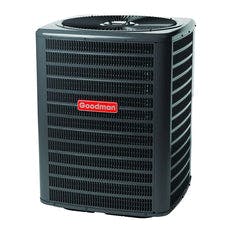
Goodman GSXN4 Split Air Conditioner
$1,516.00 - $2,684.00
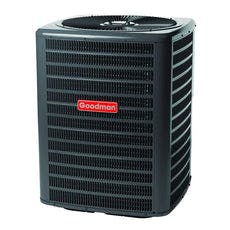
Goodman GSXN3 SEER2 Split Air Conditioner
$1,343.00 - $2,378.00
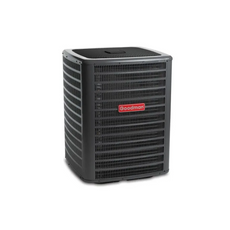
Goodman GSXH5 SEER2 High-Efficiency Split System Air Conditioner Condenser
$1,809.00 - $3,205.00
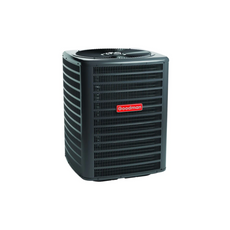
Goodman GSXB4 Split Air Conditioner
$1,668.00 - $2,952.00
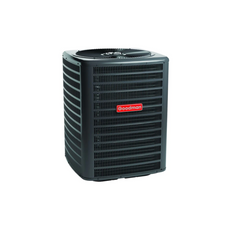
Goodman GSXM4 Multi-Family Split System Air Conditioner
$1,591.00 - $2,015.00
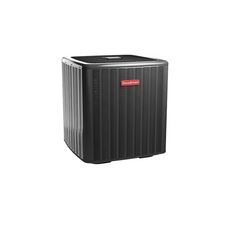
Goodman GSXC7 SEER2 Split System Air Conditioner
$2,448.00 - $4,012.00

uHoo Indoor 9-in-1 Smart Air Quality Monitor
$299.00

Airpura Smart Air Quality Monitor
$199.00

What Are Some Landscaping Strategies to Make Your Home More Energy-Efficient?
Before you head out to your local nursery and begin to purchase dozens of trees, consider these basic and straightforward landscaping strategies that you can employ to make your home more energy-efficient.
Give Your Air Conditioner a Hand
You can dramatically reduce your air conditioner's workload and thus increase the energy efficiency of cooling your home. Plant some thick, shade-casting plants around your unit. Ensure to prune back the branches every year to keep them from blocking airflow into the air conditioner.
Limit Heat Islands
Concrete and pavement create what is known as urban heat islands. In Albuquerque, New Mexico, to name just one example, temperatures can be upwards of 22 degrees hotter in the city than in nearby rural areas because of the heat island effect. Perhaps you live in an urban or suburban area where lots of concrete and asphalt are present. If so, consider eliminating or at least reducing the areas that absorb heat and raise the temperature around your home. Opting for gravel or permeable paving for your driveways instead of asphalt or woodchips for your paths and walkways instead of concrete slabs are a few examples of easy alternatives. Also, planting thick trees or bushes along a driveway will effectively shade the asphalt and help to reduce the heat island effect.
Strategically Place of Coniferous and Deciduous Trees
Deciduous trees lose their leaves in the winter months (e.g., maple, oak, elm, etc.). Coniferous trees maintain their vegetation year-round (e.g., fir, cedar, pine, etc.). By planting deciduous trees on the south and west sides of your home, you can block out the hotter sunlight during the summer. When those trees lose their leaves, the sunshine in winter will enter the home and thus increase the indoor temperature. Also, coniferous or evergreen trees planted on the north side of a house, where shade is almost always present, will help protect the home from cold winter winds.

How Much Does Energy Efficient Landscaping Cost?
Trees, bushes, and flowers are expensive, especially if you have a large yard and purchase them from a commercial nursery or garden supply store. Yes, trees and bushes can be costly (smaller ones are less expensive, and they will grow!).
A typical 6-foot tall x 3-foot wide techny arborvitae - great for year-round hedges and natural fences - can cost less than $60 each. Check your city or county for incentives. Often, some non-profits want to encourage homeowners to plant trees so the cost could be subsidized to a lower rate.
Based on the US Department of Energy's data, the average annual energy bill is a little over $2,000, and $865 (42%) of that is spent on heating and cooling. So, a 25% reduction in heating and cooling needs equates to annual savings of almost $220 - savings that offset costs of the upfront investment and continue to accrue year after year.
The National Renewable Energy Laboratory highlights that an 8-foot deciduous tree that you purchase from a commercial orchard costs more or less the same as an awning for one large window. The deciduous tree and the awning will both provide shade and cool the indoor temperature of your home. But, several added benefits come with opting for the tree. These include:
- The tree will lose its leaves in the wintertime, thus naturally allowing for the filtration of more light and warmth during the colder months.
- Trees actively sequester carbon from the atmosphere. The awning most likely added a good deal of carbon through the mining of the materials, the manufacturing process, and the transportation of the finished product to your local home improvement store.
- Trees help purify the air around your home, enrich the soil fertility through its constant leaf fall, attract birds and other wildlife, and even add certain mental health benefits.
These added benefits of a simple deciduous tree are not often taken into consideration by economists. A more complete and inclusive accounting would require us to be more mindful of the numerous services that the natural world provides us every day.

Can Landscaping Save Energy?
Before digging a hole to plant a tree, bush, or flower, take the time to make a drawing of your home and mark the cardinal directions along with any existing vegetation.
Once you have that drawing, use SunCalc, a free online tool, to get a basic understanding of the sun's movement and sunlight phases during a given day at a given location. Next, add your prevailing winds and any other external elements that could potentially affect your home (such as a noisy neighbor that needs to be blocked with a thick hedge) to the drawing. This drawing, along with a basic understanding of passive solar design, will help you determine your landscaping plan. This plan will help to protect your home from the cold during winter while simultaneously keeping it more comfortable in the summer.

Bottom Line
Energy-efficient landscaping will lead to a more comfortable and sustainable home that is less expensive to heat and cool. And, it will also add numerous environmental advantages over and above the financial benefits.
Disclaimer: This article does not constitute a product endorsement however Rise does reserve the right to recommend relevant products based on the articles content to provide a more comprehensive experience for the reader.Last Modified: 2021-07-02T12:01:00+0000Article by:
Tobias Roberts
Tobias runs an agroecology farm and a natural building collective in the mountains of El Salvador. He specializes in earthen construction methods and uses permaculture design methods to integrate structures into the sustainability of the landscape.